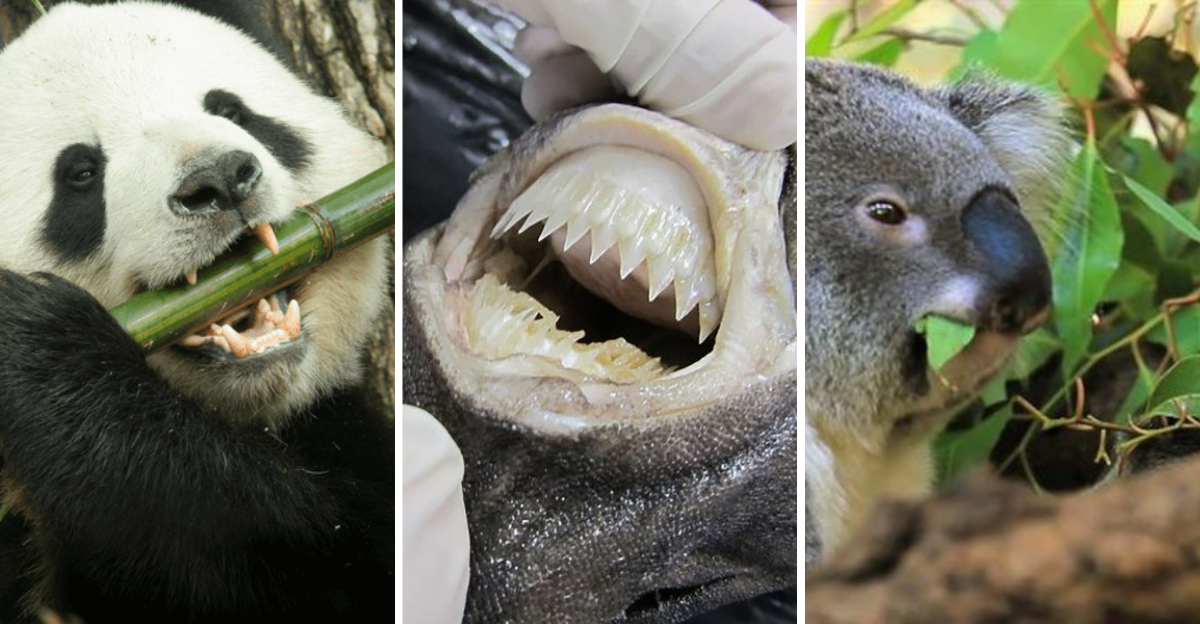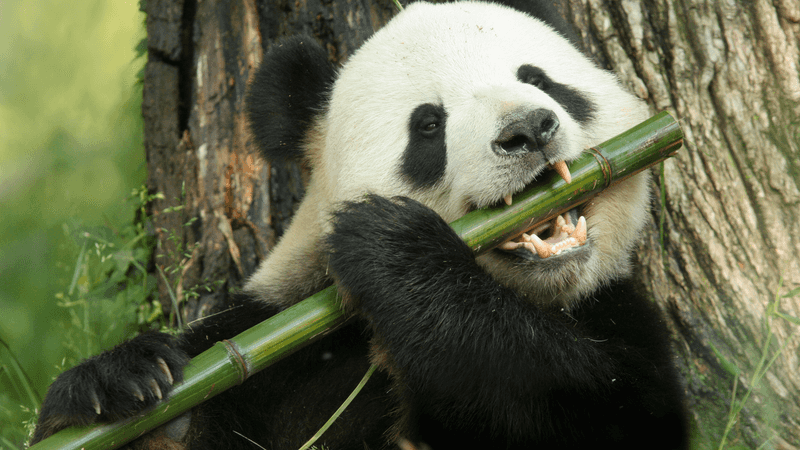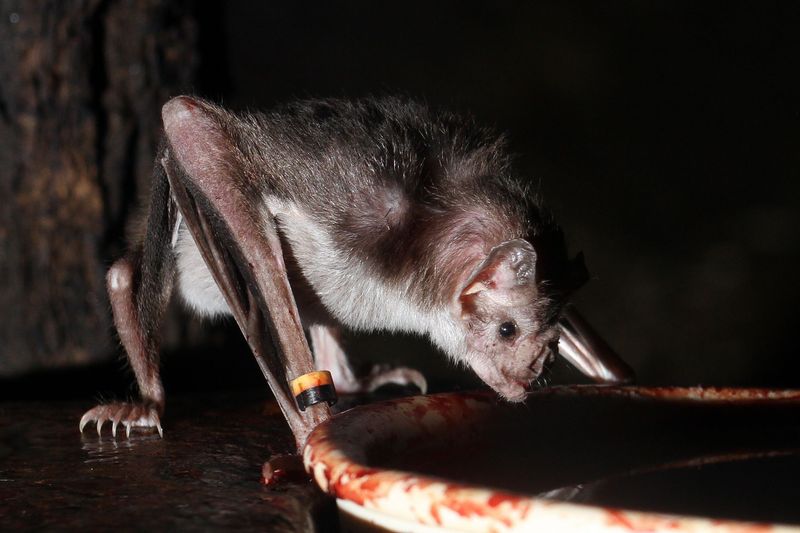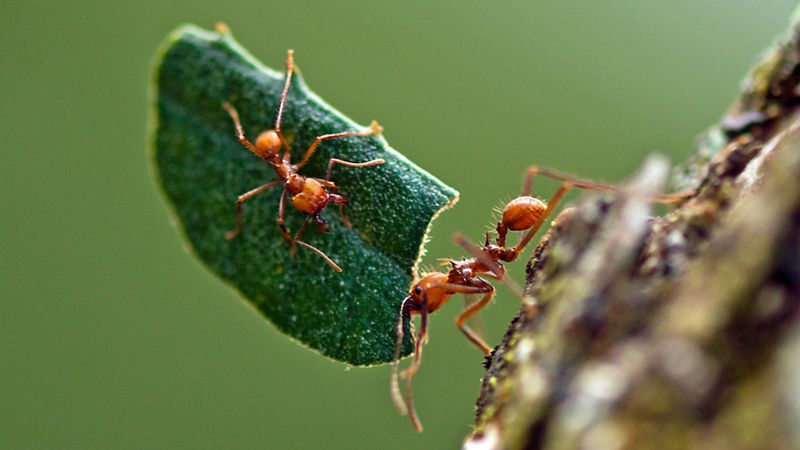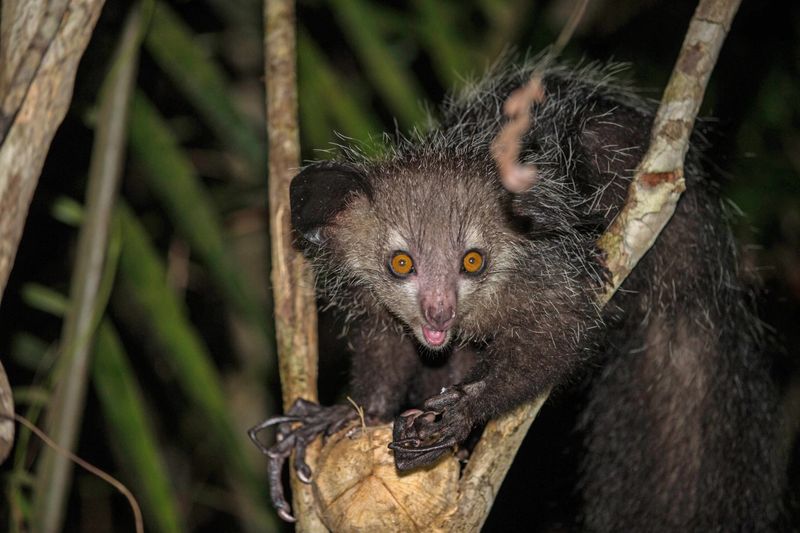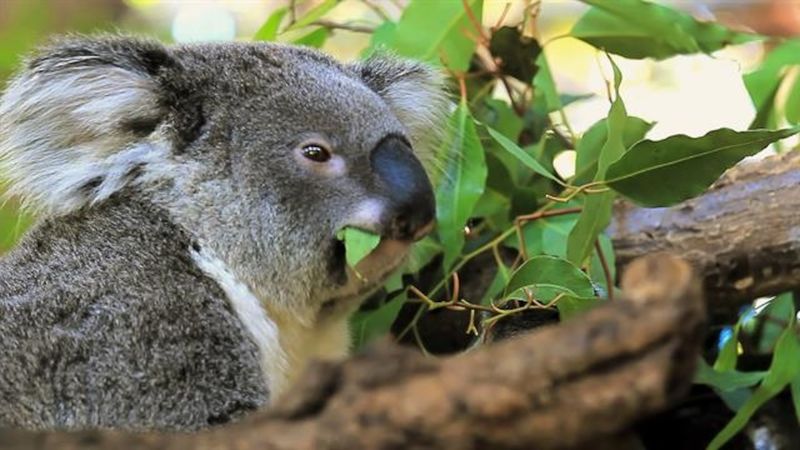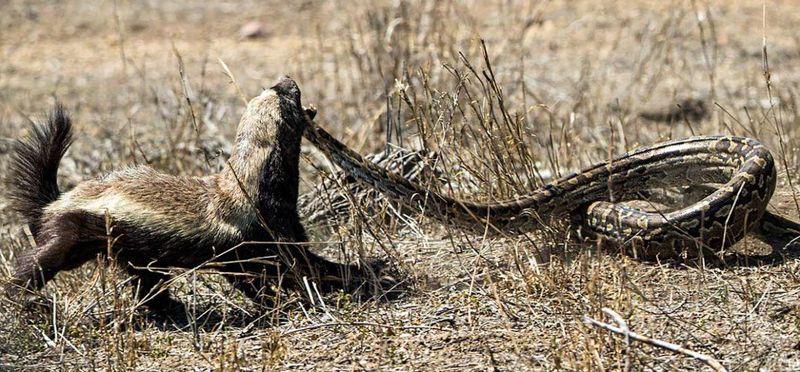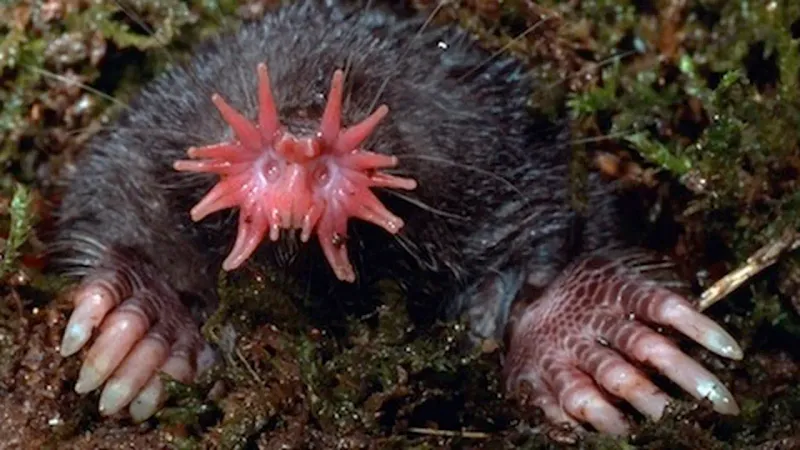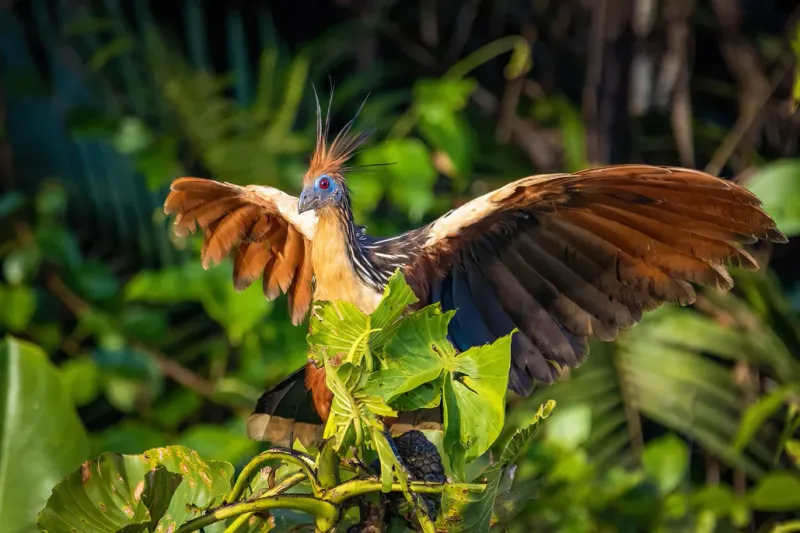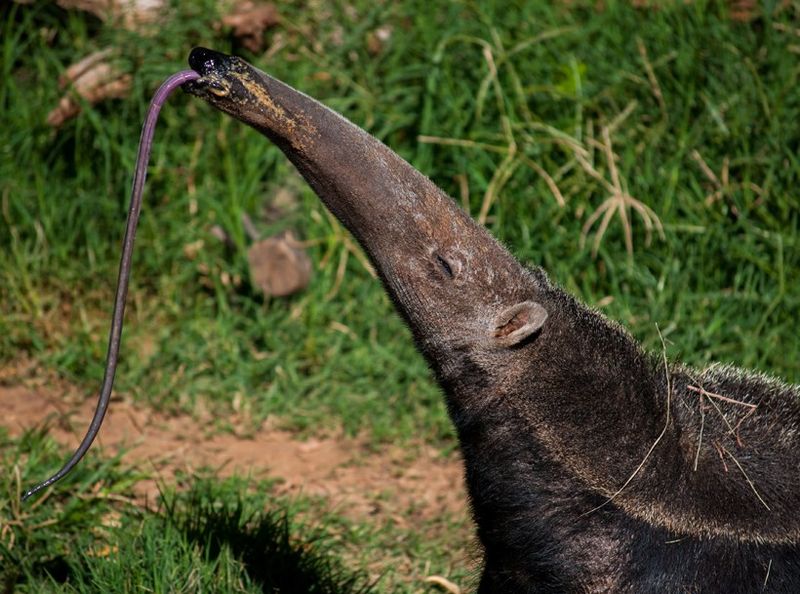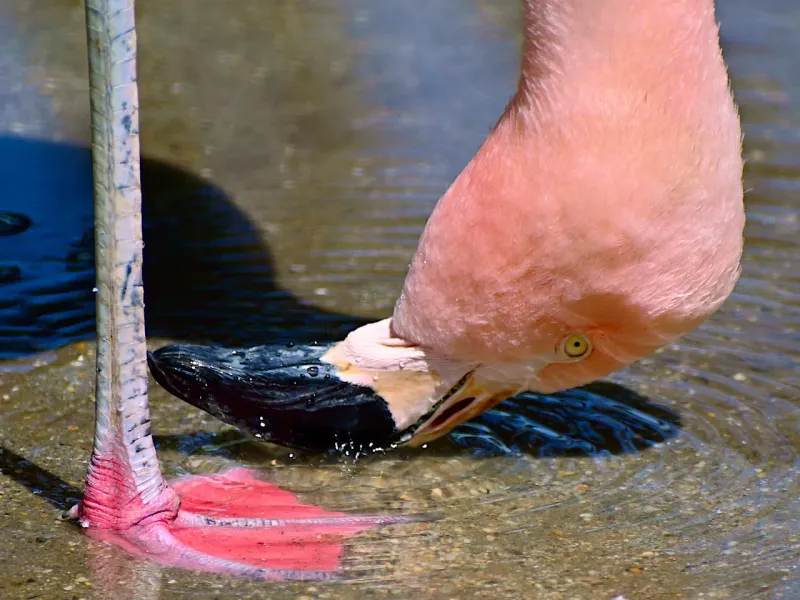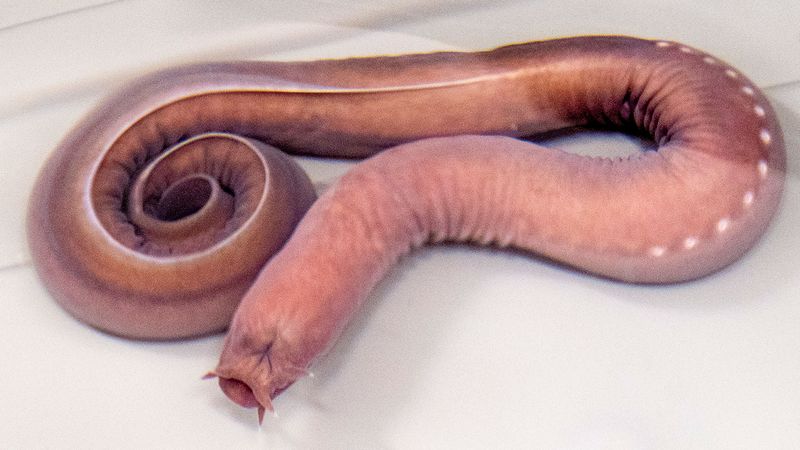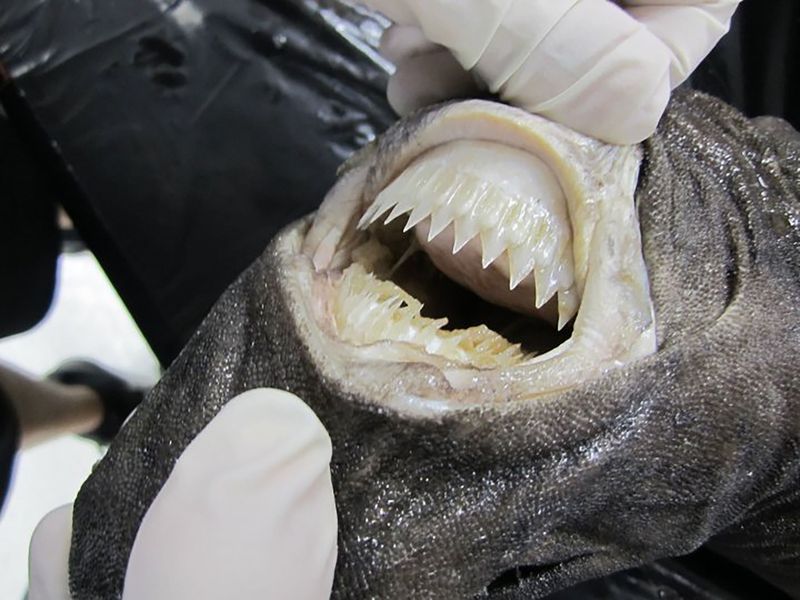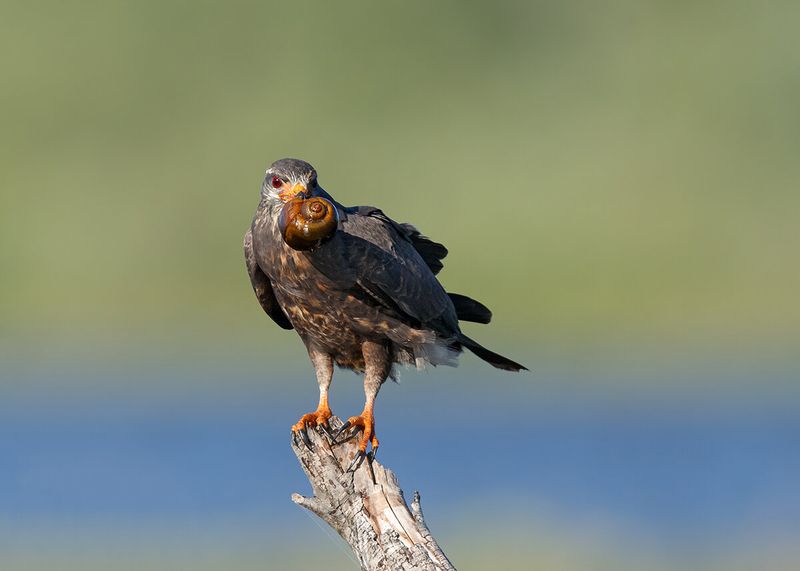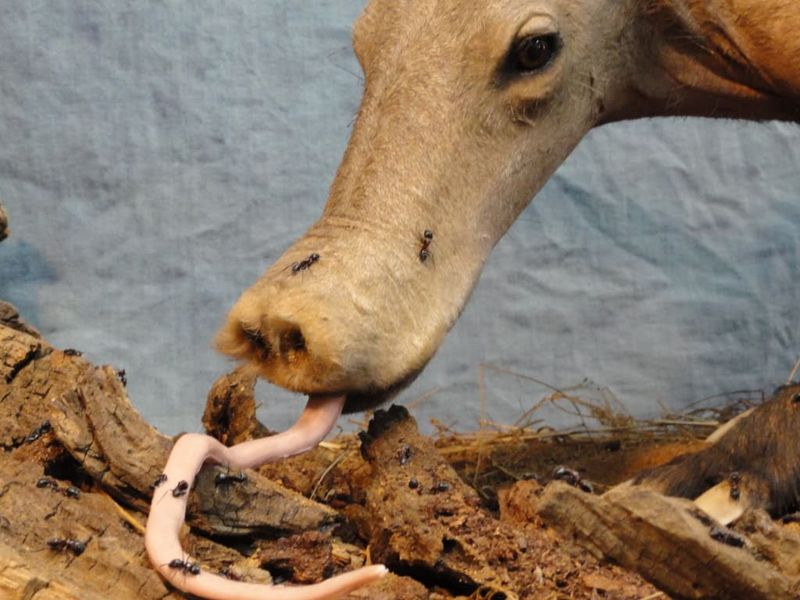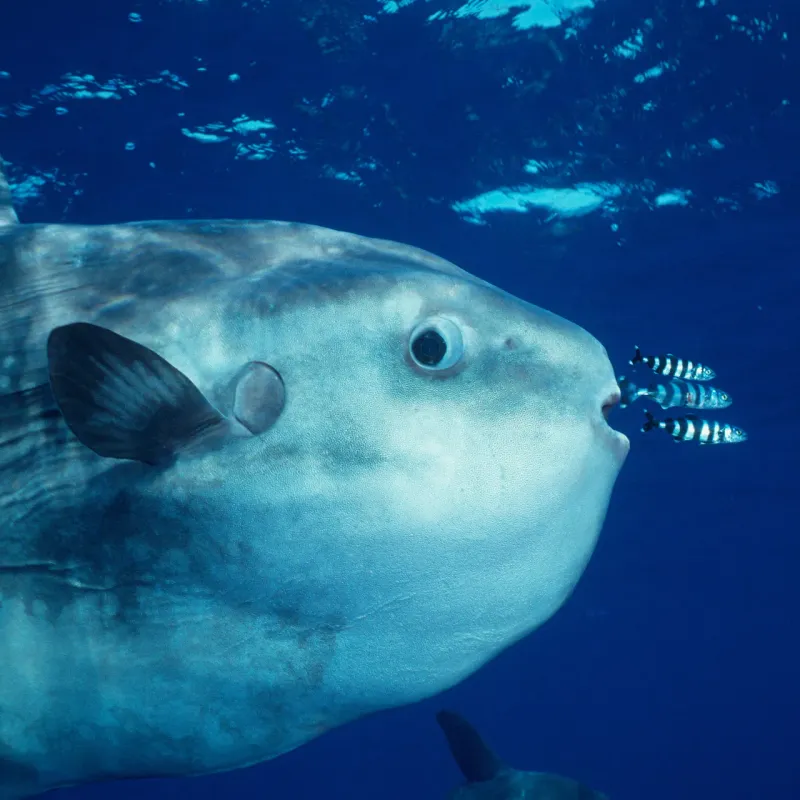Animals across our planet have evolved some truly strange eating habits. From creatures that consume toxic plants to those that feast on blood, the animal kingdom offers a fascinating look at dietary adaptations. These unusual food preferences help animals survive in their specific environments and showcase nature’s incredible diversity.
Giant Pandas: Bamboo Munchers Despite Being Carnivores
Giant pandas look like typical meat-eating bears, but their diet is shockingly different. Though classified as carnivores, these black and white bears consume around 40 pounds of bamboo daily – that’s 99% of their entire diet! Their bodies have adapted to this unusual choice with special enlarged wrist bones that function like thumbs to grip bamboo stalks. Pandas spend 10-16 hours each day just eating because bamboo provides very little nutrition. Their digestive systems actually resemble those of carnivores, making bamboo digestion inefficient. Occasionally, pandas will supplement their diet with small rodents, fish, or birds, but these make up a tiny fraction of what they eat. Fun fact: Baby pandas don’t know how to eat bamboo instinctively – they learn by watching their mothers!
Vampire Bats: Blood-Only Menu
Swooping through the night skies of Central and South America, vampire bats are the only mammals that survive exclusively on blood. These small creatures make tiny, painless incisions in sleeping animals using razor-sharp teeth and lap up flowing blood with their grooved tongues. What makes their feeding truly remarkable is the special anticoagulant in their saliva called draculin. This prevents blood from clotting while they feed for up to 30 minutes. A hungry vampire bat can drink half its body weight in a single meal! Despite their spooky reputation, vampire bats are highly social. They’ll often share regurgitated blood meals with hungry colony members who failed to find food. Without feeding for just two nights, these specialized eaters would starve to death.
Leafcutter Ants: Fungus Farmers
Marching through tropical forests in long lines, leafcutter ants carry pieces of leaves many times their size. Surprisingly, these industrious insects don’t actually eat the leaves they work so hard to collect. Instead, they’re sophisticated farmers who use leaf fragments to grow their real food. Inside massive underground colonies, leafcutters chew the leaves into a pulp and use this material to cultivate specific fungi. The ants carefully tend these fungal gardens, removing competing molds and adding special secretions that help their preferred fungus grow. This remarkable agricultural system developed millions of years before humans first planted crops. Different worker ants have specialized roles in this process – from leaf harvesters to garden tenders. A mature colony can contain millions of ants consuming hundreds of pounds of leaves annually just to feed their fungal farms.
Aye-Ayes: Percussive Insect Hunters
Looking like something from a spooky story with their huge eyes and bizarre elongated middle finger, aye-ayes employ a truly unique hunting method. These nocturnal lemurs from Madagascar tap rapidly on tree trunks while listening carefully, using echolocation to find insect tunnels hidden beneath the bark. Once they detect hollow areas where grubs might be hiding, aye-ayes use their specialized middle finger – which features a ball-and-socket joint like our shoulders – to drill into the wood. They then insert this bony finger into the hole and hook out juicy insect larvae for a protein-rich meal. Local superstitions have unfortunately made these animals targets for persecution. Their distinctive appearance and unusual feeding behavior have led some communities to believe seeing an aye-aye brings bad luck. Scientists estimate fewer than 10,000 remain in the wild.
Koalas: Eucalyptus Toxin Specialists
Sleeping up to 22 hours daily helps koalas conserve the little energy they get from their bizarre diet choice. These Australian marsupials consume almost exclusively eucalyptus leaves – a food so toxic it would kill most other animals! Koalas possess specialized digestive systems containing unique microbes that detoxify the poisonous compounds in eucalyptus. Their intestines feature an extra-long cecum – about 6 feet in length – where fermentation breaks down the tough plant material. Even with these adaptations, eucalyptus provides so little nutrition that koalas must limit their movement to conserve energy. A koala’s liver works overtime filtering toxins, while their specialized teeth grind the fibrous leaves into a digestible paste. Despite all these adaptations, they still need to eat up to a kilogram of leaves daily just to survive. No wonder they look so tired!
Honey Badgers: Venomous Snake Connoisseurs
Pound for pound, honey badgers might be the most fearless eaters on the planet. These muscular carnivores actively hunt and consume highly venomous snakes including cobras, puff adders, and black mambas – bites that would quickly kill animals many times their size. Their secret weapon is a specialized immunity to snake venom developed through evolutionary adaptation. While not completely immune, honey badgers can withstand venom doses that would be lethal to other mammals. Their thick, loose skin also provides protection against snake strikes and bee stings when raiding honey nests (which gave them their name). When attacking venomous snakes, honey badgers employ a strategic approach – aiming for the head while dodging strikes. They’ll even take naps during longer battles, allowing their bodies to process any venom received before continuing the fight. Talk about extreme dining!
Star-Nosed Moles: Speed-Eating Champions
Imagine having a star-shaped organ on your face with more than 100,000 nerve endings! Star-nosed moles possess the most sensitive touch organs in the animal kingdom, which they use to find and consume food faster than seems physically possible. These bizarre-looking creatures can identify and eat food items in less than a quarter of a second – too fast for the human eye to follow. Their 22-tentacled nose contains six times more touch sensors than a human hand packed into an area smaller than a fingertip. This sensory superpower allows them to detect and consume small prey even underwater, where they can smell by blowing air bubbles and re-inhaling them. A single star-nosed mole can consume 50-60 earthworms daily, along with insects, aquatic invertebrates, and small fish. Scientists have officially recognized them as the world’s fastest eaters relative to their size.
Hoatzins: Leaf-Fermenting Flying Cows
Locals in the Amazon rainforest call hoatzins “stinkbirds” for good reason. These unusual birds have evolved a digestive system more like cows than other birds, fermenting leaves in a specialized crop that gives them a distinctive manure-like odor. Hoatzins consume a diet almost entirely of leaves – something very few birds can manage. Their massive crop contains multiple chambers where bacteria ferment tough plant material, breaking it down similarly to a cow’s stomach. This fermentation process produces the smelly compounds that make these birds easy to locate by smell. Young hoatzins possess another oddity – claws on their wings that help them climb trees before they can fly! These claws disappear as they mature. The fermentation process makes hoatzins rather clumsy fliers since their heavy digestive organs shift their center of gravity forward, making these leaf-eaters some of the strangest birds in the world.
Giant Anteaters: Termite Vacuum Specialists
With a tongue that can extend up to two feet long and flick in and out 150 times per minute, giant anteaters are perfectly designed eating machines. These remarkable mammals can consume up to 35,000 ants and termites in a single day using their specialized feeding equipment. Unlike most mammals, anteaters have no teeth. Instead, they crush insects against hard ridges in their mouths and swallow them whole. Their stomachs contain powerful acids and grinding muscles that finish breaking down their crunchy meals. To avoid being stung too many times, anteaters spend only about a minute at each insect nest before moving on. Giant anteaters have adapted their entire lifestyle around their unusual diet. They sleep curled up with their bushy tails covering their bodies to conserve heat since their low-calorie insect diet doesn’t provide much energy for maintaining body temperature.
Flamingos: Upside-Down Filter Feeders
The pink color of flamingos comes directly from their bizarre feeding method. These elegant birds feed with their heads upside-down, using specialized bills that work like filtering sieves when positioned backward in shallow water. Flamingos pump water through comb-like structures called lamellae that trap tiny organisms like algae, shrimp, and other crustaceans. Their tongues then pump rapidly – up to four times per second – to move this food-filled water through their filtering system. The beta-carotene in the tiny creatures they consume is what gives flamingos their famous pink coloration. Baby flamingos are actually born with gray feathers and straight bills. As they mature, their bills curve and their feathers turn pink from their diet. In captivity, flamingos would fade to white without special food supplements containing the same pigments found in their natural diet. Talk about truly being what you eat!
Hagfish: Suffocation and Slime Diners
Resembling primitive eels, hagfish employ perhaps the most disgusting feeding strategy in the animal kingdom. These ancient creatures burrow into dead or dying fish through any available opening – mouth, gills, or even creating their own entry wound – and literally eat their prey from the inside out. Hagfish have no jaws but use tooth-like structures on specialized plates to rasp away flesh once inside their victim. They can absorb nutrients directly through their skin as well as through their digestive tract. When threatened, they produce massive amounts of slime – up to 5 gallons from a single hagfish – that can suffocate predators by clogging their gills. These bottom-dwellers can survive months without food and can tie themselves in knots to gain leverage when feeding on tough tissues. Despite their gruesome feeding habits, hagfish play a crucial role in ocean ecosystems by cleaning up dead and decaying animals on the seafloor.
Cookie-cutter Sharks: Living Cookie Cutters
Swimming in the deep ocean, cookie-cutter sharks have evolved one of the most bizarre feeding strategies ever documented. These small sharks (rarely exceeding 20 inches) take perfectly round bites out of much larger animals including tuna, whales, dolphins, and even submarines! Their specialized jaws contain a row of razor-sharp lower teeth arranged like a saw blade. After attaching to prey using suction created by their thick lips, they twist their entire bodies to carve out a plug of flesh. The resulting wounds look exactly like they were made with a cookie cutter – perfectly circular and about 2 inches across. These unusual sharks also have the most powerful bite force relative to their size of any shark species. At night, they migrate upward from depths of 3,000 feet to hunt near the surface. Their bodies contain light-producing organs called photophores everywhere except a dark collar around their throat, creating a clever luring strategy for attracting larger fish.
Snail Kites: Exclusive Snail Surgeons
With a beak so specialized it can only effectively eat one type of food, snail kites showcase extreme dietary specialization. These medium-sized birds of prey feed almost exclusively on apple snails, using their deeply curved, narrow bills to extract snail meat from shells without breaking them. Flying low over freshwater marshes in Florida and Central/South America, snail kites scan for snails at the water’s surface. Once spotted, they swoop down to pluck the mollusk with their feet, then perch on a branch to perform their specialized extraction. The bird’s bill perfectly matches the spiral opening of the snail shell, allowing it to cut the muscle attaching the snail to its shell. This extreme specialization makes snail kites highly vulnerable to environmental changes. When water management practices in Florida affected apple snail populations in the 1970s, snail kite numbers plummeted dramatically. Their population only stabilized after water flow patterns were adjusted to support snail habitat.
Aardvarks: Termite Tongue Specialists
Armed with a sticky tongue that can extend up to 12 inches and nostrils that close to keep out dust, aardvarks are perfectly designed termite-hunting machines. These pig-snouted mammals can devour up to 50,000 insects in a single night using their specialized feeding equipment. Aardvarks locate termite mounds using their excellent sense of smell, then rapidly dig openings with powerful claws that can break through even concrete-hard termite nests. Once they create an opening, they insert their long, sticky tongues to collect the insects. Their saliva contains a special adhesive substance that helps termites stick to their tongues. To handle their unusual diet, aardvarks have evolved stomachs with special muscular chambers and strong acids to digest the tough exoskeletons of termites. These solitary animals travel up to 10 miles nightly in search of enough insect colonies to satisfy their huge appetite, using their ears to detect termite movement inside mounds.
Sunfish: Jellyfish Junkies
Ocean sunfish (Mola mola) look like swimming heads with tiny mouths, but these bizarre fish can grow to the size of a small car! Weighing up to 5,000 pounds, they’re the heaviest bony fish in the world, yet they subsist primarily on a diet of nutritionally poor jellyfish. To maintain their massive size on such a low-calorie diet, sunfish must consume enormous quantities of food. Their small mouths contain fused teeth forming a beak-like structure perfect for crunching jellyfish. Since jellyfish are more than 95% water, sunfish must eat constantly – an adult might need hundreds of pounds of jellyfish daily just to maintain its energy needs. Surprisingly, sunfish flesh contains toxins from their jellyfish diet that make them inedible to many predators. They often float sideways at the ocean’s surface, appearing to sunbathe while actually allowing seabirds to pick parasites from their skin – another unusual adaptation to their strange lifestyle.
